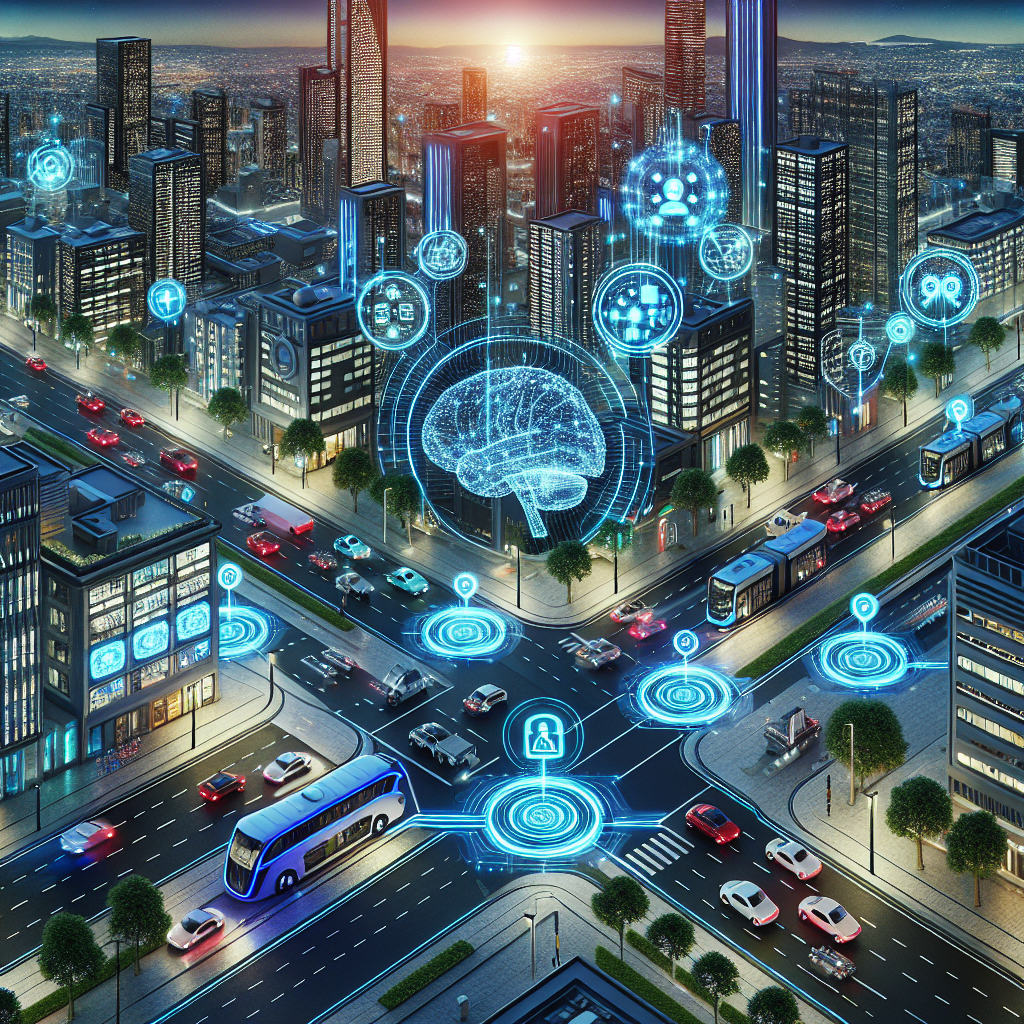Smart Cities and AI: Transforming Urban Transportation Systems
In today’s rapidly evolving world, the concept of smart cities has gained significant traction. These cities are designed to leverage technology and data to improve efficiency, sustainability, and the overall quality of life for residents. One of the key areas where smart cities are making a significant impact is in urban transportation systems. By harnessing the power of artificial intelligence (AI), smart cities are transforming the way people move around in urban areas.
AI in Urban Transportation
AI is playing a crucial role in revolutionizing urban transportation systems. From traffic management to public transit optimization, AI is being used to make transportation more efficient, reliable, and sustainable. Here are some of the ways in which AI is transforming urban transportation:
1. Traffic Management: AI-powered systems are being used to monitor and analyze traffic patterns in real-time. By using data from sensors, cameras, and other sources, these systems can predict traffic congestion, accidents, and other disruptions. This information can then be used to optimize traffic flow, reduce congestion, and improve overall road safety.
2. Public Transit Optimization: AI is also being used to optimize public transit systems. By analyzing data on passenger demand, traffic conditions, and other factors, AI can help improve the efficiency of bus and train schedules, reduce wait times, and enhance the overall passenger experience.
3. Autonomous Vehicles: AI-powered autonomous vehicles are another key innovation in urban transportation. These vehicles use AI algorithms to navigate roads, avoid obstacles, and make decisions in real-time. By reducing the need for human drivers, autonomous vehicles have the potential to improve road safety, reduce traffic congestion, and increase overall efficiency.
4. Ride-Sharing Services: AI is also being used to optimize ride-sharing services such as Uber and Lyft. By analyzing data on passenger demand, traffic conditions, and other factors, AI algorithms can match riders with drivers more efficiently, reduce wait times, and improve the overall ride-sharing experience.
Benefits of AI in Urban Transportation
The adoption of AI in urban transportation systems offers a wide range of benefits for both cities and residents. Some of the key benefits include:
1. Improved Efficiency: AI-powered systems can help optimize traffic flow, reduce congestion, and improve the overall efficiency of urban transportation systems. This can lead to shorter travel times, reduced fuel consumption, and lower emissions.
2. Enhanced Safety: AI can also help improve road safety by predicting traffic accidents, identifying hazardous conditions, and alerting drivers to potential risks. By reducing the number of accidents and fatalities, AI can make urban transportation systems safer for everyone.
3. Reduced Environmental Impact: By optimizing traffic flow and reducing congestion, AI can help reduce the environmental impact of urban transportation. This can lead to lower emissions, improved air quality, and a healthier urban environment.
4. Better Passenger Experience: AI-powered systems can help optimize public transit schedules, reduce wait times, and improve the overall passenger experience. This can lead to higher ridership, increased customer satisfaction, and a more sustainable transportation system.
FAQs about Smart Cities and AI in Urban Transportation
Q: How can AI help reduce traffic congestion in urban areas?
A: AI-powered systems can analyze traffic patterns in real-time, predict congestion hotspots, and optimize traffic flow to reduce congestion. By using data from sensors, cameras, and other sources, AI can help identify bottlenecks, reroute traffic, and improve overall road capacity.
Q: What are some of the challenges of implementing AI in urban transportation systems?
A: One of the key challenges of implementing AI in urban transportation systems is the need for data. AI algorithms require large amounts of data to train and operate effectively. Cities need to invest in sensors, cameras, and other data collection technologies to ensure that AI systems have access to the data they need.
Q: How can AI improve public transit systems?
A: AI can help optimize public transit schedules, reduce wait times, and improve the overall passenger experience. By analyzing data on passenger demand, traffic conditions, and other factors, AI can help public transit agencies improve the efficiency and reliability of their services.
Q: What are some of the privacy concerns associated with AI in urban transportation?
A: One of the key privacy concerns associated with AI in urban transportation is the collection and use of personal data. AI-powered systems often rely on data from sensors, cameras, and other sources to operate effectively. Cities need to ensure that they have robust data privacy policies in place to protect the privacy of their residents.
Q: How can AI help make autonomous vehicles safer?
A: AI algorithms are being used to improve the safety of autonomous vehicles by enabling them to navigate roads, avoid obstacles, and make decisions in real-time. By using data from sensors, cameras, and other sources, AI can help autonomous vehicles identify potential risks and take appropriate action to avoid accidents.
In conclusion, AI is playing a crucial role in transforming urban transportation systems in smart cities. By harnessing the power of AI, cities can improve efficiency, reliability, and sustainability in their transportation systems. From traffic management to public transit optimization, AI is driving innovation and creating a more connected and efficient urban environment. As smart cities continue to evolve, the integration of AI in urban transportation will play a key role in shaping the future of urban mobility.

